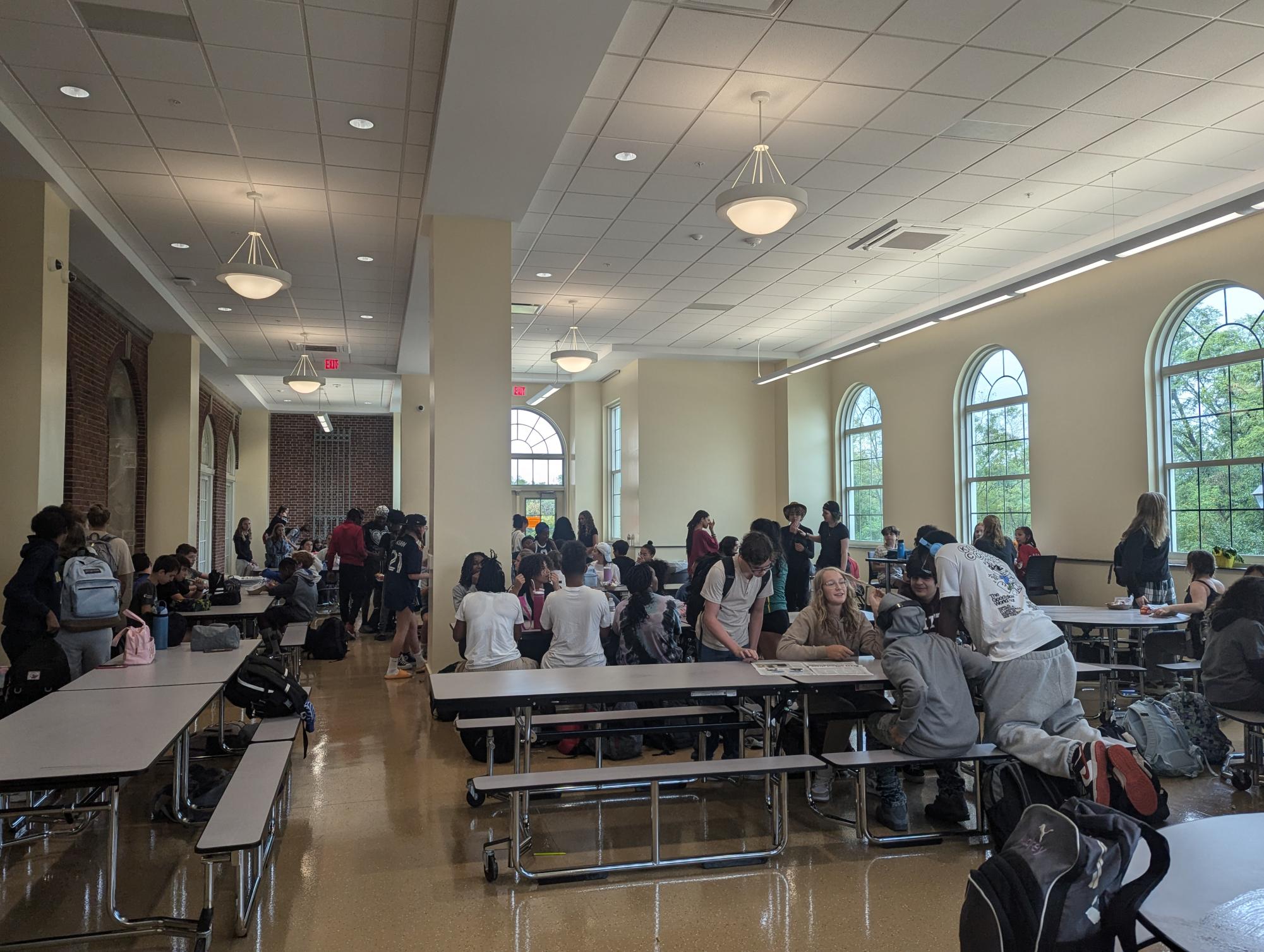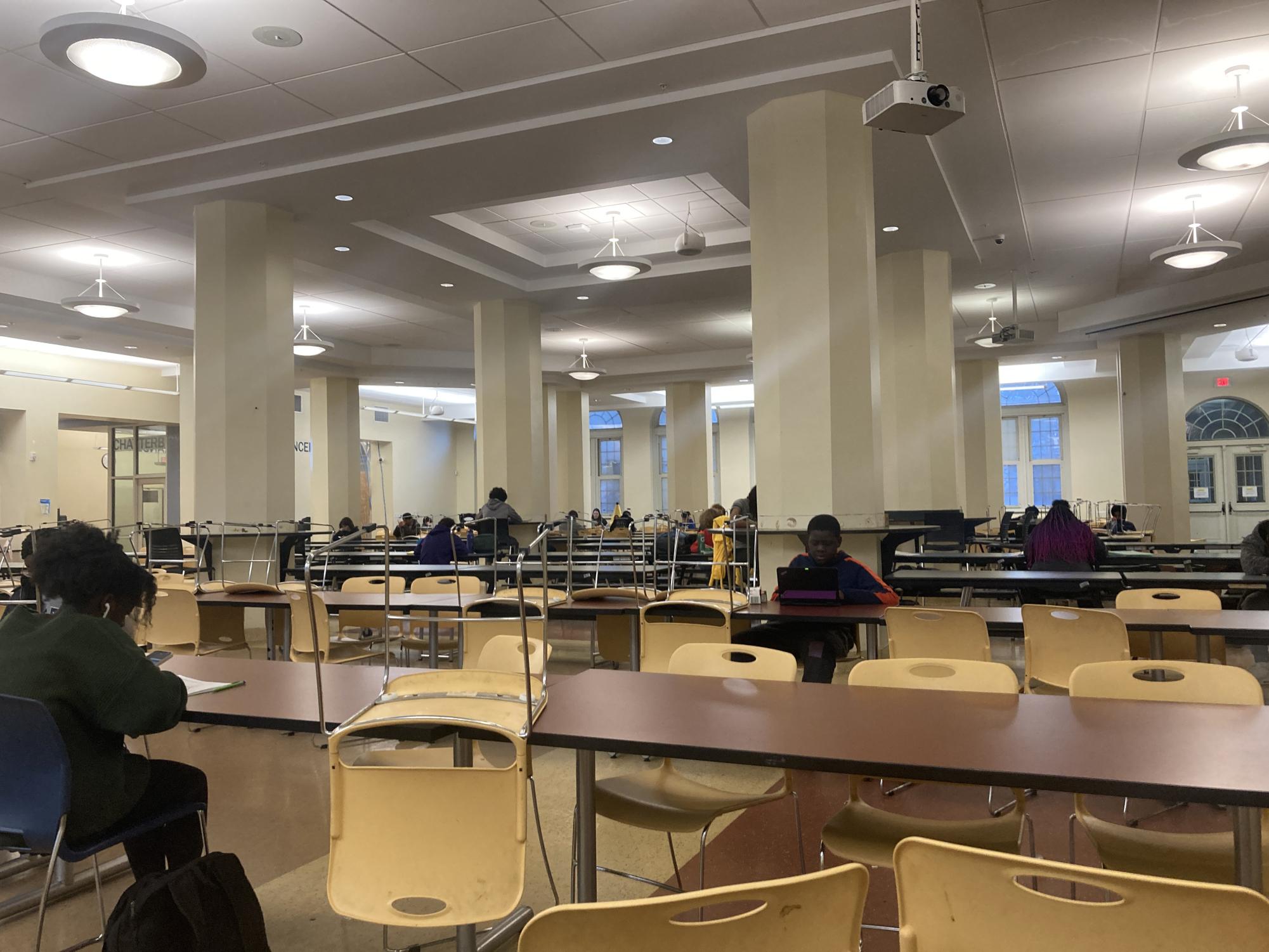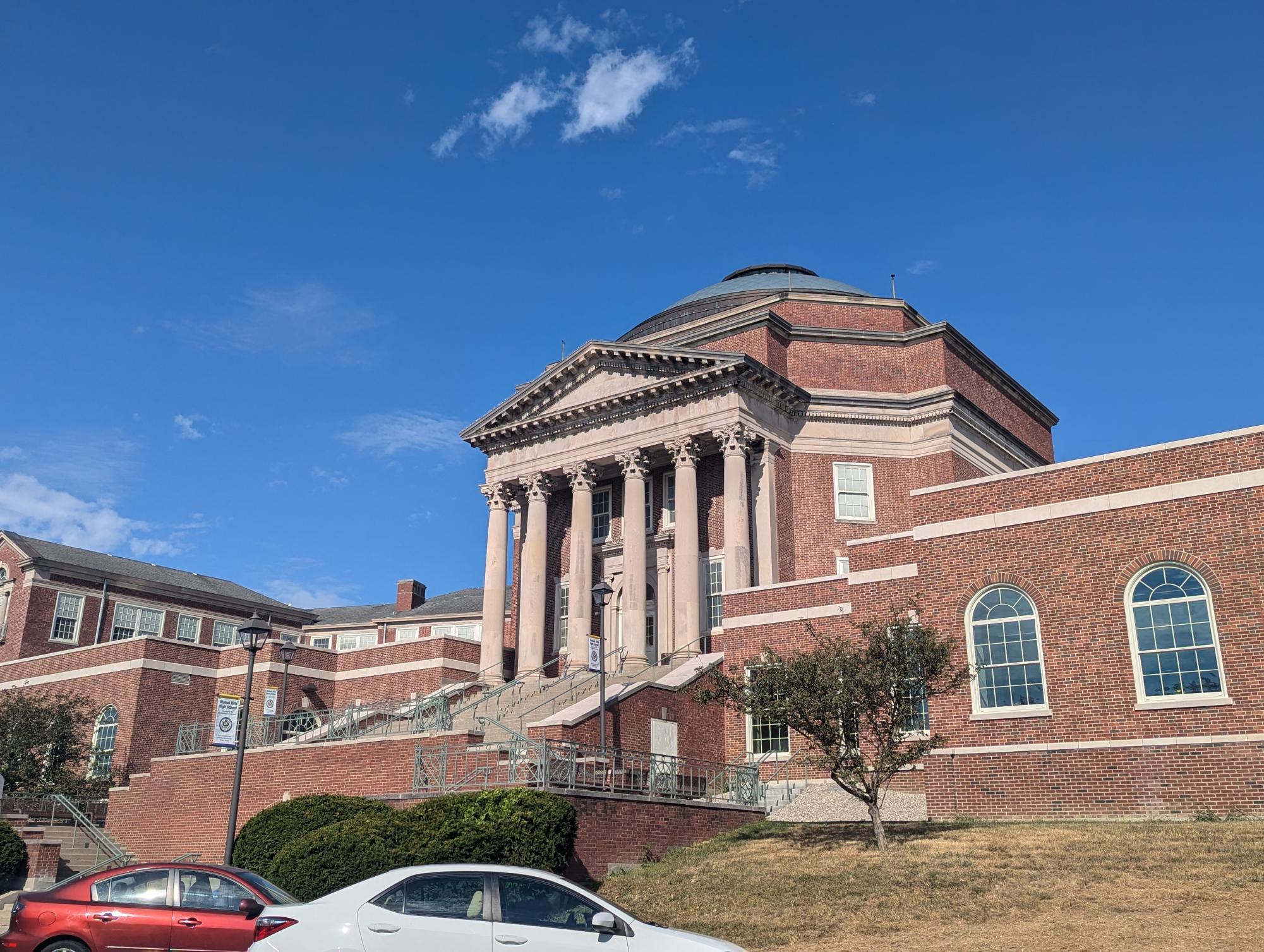Light floods in from high, arched windows across a noisy interior, bustling with activity. Students congregate around round tables that are scattered across the recently polished floor. Others drift off to more secluded wings that branch from either side of the main room. The recent cafeteria addition, just finished this summer, expands the previously crowded space from a maximum occupancy of 650 to 1000 people.
“We had to be clever in how we utilize spaces,” Debbie Heldman, Executive Director of the WHHS Alumni Foundation, said.
Heldman, the visionary behind most construction efforts at WHHS over the past three decades, aimed to create a permanent, unified dining space that students could enjoy. The district-funded project added wings, replaced the teacher dining room with a student lunch area, refurbished the interior and added a fresh coat of paint to the walls. Despite these changes, the addition blends seamlessly into the existing structure.
“I think if you go out on Sulsar and look, it won’t look like we stuck these buildings on; that is a fundamental design feature,”

Heldman said. “The brick is the same, the stonework is the same; you look at the railings out here, they’re the same that we’ve used in every courtyard.”
The building now has four separate layers of brick: from 1932, 1999, 2014 and 2024, each of which needed to appear indistinguishable from older layers.
“The architects that we used in 1999 [for the arts and sciences addition] are the same architects we’ve used throughout all our projects because they understand what our values are,” Heldman said. “We have a great design team.”
Despite these transformations, parts of the original cafeteria remain untouched. The Sulsar courtyards, for example, remain unscathed, now enclosed by walls on each side. Additionally, the original facade arches are located toward the back of the cafeteria.
“You don’t really see the details because you just walk past, and that’s very intentional,” Heldman said.
CPS requires that all schools use similar furniture so tables can be transferred between schools without posing design issues. Heldman accounted for this constraint and put her own spin on the layout. Instead of lining one row of tables after another, the new cafeteria blends table shapes to create more visual variety and ease seating arrangements. Now, round tables, high seating, and traditional benches are all available for students to use.
“They [other schools] are all the same, but I feel like we have a personality,” Heldman said.
However, this recent construction only exists because of enrollment pressure. After the 2014 renovation, the student population was above the campus capacity. The COVID-19 pandemic further exacerbated this issue: implementing social distancing guidelines proved difficult while trying to convert gyms into temporary, safe dining spaces.
Despite efforts to convert the indoor tennis courts into another dining area, an idea that remains incomplete to this day, Heldman believed the school needed a permanent space that could accommodate higher enrollment without separating students.
“It [the tennis court] wasn’t really built for that [dining],” Heldman said. “It was primarily built for an emergency.”

Thus plans for the new cafeteria were born. Heldman is also refurbishing the gates from the Sulsar courtyards to create art installations that will eventually flank the top of the staircase.
“We’re repurposing those [the gates] to make them into something that will look like it’s always been here,” Heldman said.
The cafeteria was the main attraction this summer, but new projects to improve the school grounds are almost always underway.
“In the top of the music lyceum, there’s a new mural there commissioned by [the class of] 1980,” Heldman said. “We’re going to add some other murals throughout the building.”
Specifically, Heldman plans to decorate the walls next to the Student Success Center with a student-created mural sometime this year. Ultimately, the goal of these projects, cafeteria or otherwise, is to reflect the growth and history of the school over the years.
“There is a common goal that we always want to make sure that we honor our past… and that as we move forward with whatever, that’s our core value,” Heldman said.



